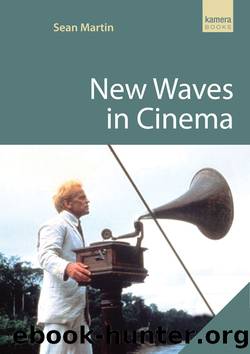New Waves in Cinema by Sean Martin

Author:Sean Martin
Language: eng
Format: epub
ISBN: 9781842434468
Publisher: Oldcastle Books
Published: 2013-05-30T00:00:00+00:00
Andrzej Munk
Andrzej Munk (1921â61) is arguably the most important Polish School filmmaker after Wajda. Like Wajda, he was concerned with the impact of history upon ordinary Poles and explored it in the five features he was able to complete before his untimely death in 1961 (he was killed in a car crash).
Man on the Tracks (CzÅowiek na torze, 1956) tells the story of Orzechowski, an elderly railway engineer who is struck and killed by a train in the first minutes of the film. What follows is a multiple-flashback investigation into his death â was it murder or suicide? â and also his life, revealing him to have been a not entirely sympathetic character, but one who is also a kind of folk hero, âa spokesman for the superiority of practical experience over any idealismâ.259 In this sense he is a critic of the communist system; Munk gets out of being openly critical of the party by having Orzechowski killed in an apparent accident. On another level, the film is also a critique of the ordinary Pole as represented in popular culture, something Munk would address in his next feature.
Heroism (Eroica, 1958) deals with the Warsaw Uprising, but in a much more irreverent way than Wajdaâs Kanal (both Man on the Tracks and Kanal were written by Jerzy Stefan Stawinski). The first part, Scherzo Alla Pollacca, chronicles the misadventures of a character called Dzidzius (Babyface), who is more concerned with wine, women and song than the struggle to defeat the Nazis; he is, in effect, a sort of Polish Good Soldier Å vejk. He is frequently shown looking in the opposite direction to other characters, or standing still while everyone else is in motion. In one of the filmâs most celebrated sequences, Dzidzius sits down to recover from enemy action by gulping from a bottle of wine, unaware that a German tank is approaching him from behind. In another sequence, he is charged with the mission of getting the Hungarians to come to the aid of the uprising. The filmâs second part, Ostinato Lugubre, takes place in a POW camp. One of the inmates, Zawistowski, attempts to escape from the camp. His fellow Poles arenât sure whether he actually got out, but they eventually become convinced that he succeeded; in reality, Zawistowski has been hiding in the attic of one of the other huts in the camp; he had not wanted to escape, merely to get away from the unbearable patriotism of his fellow countrymen.
Bad Luck (Zezowate szczÄÅcie, 1960) features another anti-hero, Jan Piszczyk (Bogumil Kobiela), who ricochets through history (the action takes place between 1930 and 1960) like some hapless pinball, switching sides whenever he deems it expedient to do so. Often he is simply in the wrong place at the wrong time: in one of the pre-war sequences, he is beaten up twice by the police, who mistake him first for a Jew and then for an anti-Semitic agitator. (He is neither.)
Munkâs last film, Passenger (Pasażerka, 1963), is a very different piece of work.
Download
This site does not store any files on its server. We only index and link to content provided by other sites. Please contact the content providers to delete copyright contents if any and email us, we'll remove relevant links or contents immediately.
Kathy Andrews Collection by Kathy Andrews(11326)
The remains of the day by Kazuo Ishiguro(8395)
Paper Towns by Green John(4800)
Spare by Prince Harry The Duke of Sussex(4788)
Industrial Automation from Scratch: A hands-on guide to using sensors, actuators, PLCs, HMIs, and SCADA to automate industrial processes by Olushola Akande(4604)
The Body: A Guide for Occupants by Bill Bryson(4585)
Be in a Treehouse by Pete Nelson(3648)
Machine Learning at Scale with H2O by Gregory Keys | David Whiting(3627)
Harry Potter and the Goblet Of Fire by J.K. Rowling(3609)
Never by Ken Follett(3528)
Goodbye Paradise(3446)
The Remains of the Day by Kazuo Ishiguro(3139)
Into Thin Air by Jon Krakauer(3131)
The Cellar by Natasha Preston(3077)
The Genius of Japanese Carpentry by Azby Brown(3040)
Fairy Tale by Stephen King(2949)
120 Days of Sodom by Marquis de Sade(2941)
Drawing Shortcuts: Developing Quick Drawing Skills Using Today's Technology by Leggitt Jim(2940)
The Man Who Died Twice by Richard Osman(2808)
